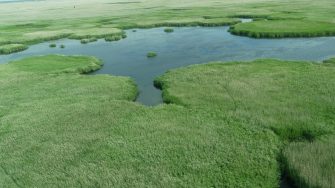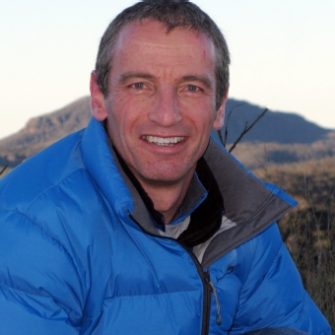
Date: Wednesday October 11th 2023
Project: Eastern Australian Waterbird Survey
Observers: John Porter (NSW DPE), Shannon Dundas (NSW DPI)
Trainee: Chris Sanderson (Qld DES)
Pilot: Thomas Clark
After some overnight showers we encountered a little difficulty finding a taxi to the airstrip. Eventually we departed Thargomindah and headed west along the water holes of the Bulloo River. We could see the deeper waterholes had water but there is no flow and low numbers of waterbirds, with herons, Black Duck, Wood Duck and spoonbills being the most common.
Water on the ground at Thargomindah airport
Our next target was the Bulloo Lakes, they are two large freshwater lignum swamps which were around 70% full with thousands of waterbirds but not as many as we have seen in previous years. There was good diversity with Brolgas, Grey Teal, Wood Duck, Hardhead, herons, cormorants, egrets, spoonbills, coot, Black-tailed Native Hens, stilts and terns.
Surveying Bulloo Lakes part 1
Surveying Bulloo Lakes part 2
Surveying Bulloo Lakes part 3
Bulloo Lakes
Bulloo Lakes
From the Bulloo overflow we raced south-west back into NSW to count the mighty Paroo Overflow lakes. Only Peery, Yantabangee and Mullawoolka held water and they were around 75% full. Together they supported tens of thousands of waterbirds, mainly Grey Teal, Pink-eared Duck, Black Duck, Hardheads, coot, avocets, Pelicans, comorants, terns, Glossy Ibis, herons, spoonbills and egrets.
Our next objective was the northern section of Macquarie Marshes which had received some environmental water releases and the red gums, cumbungi and phragmites dominated vegetation looked in good condition, There were moderate numbers of waterbirds and no evidence of breeding colonies. We continued eastwards, counting over many small farm dams and water courses. The sun was almost setting as we arrived in Armidale after another long day in the aircraft.
Macquarie Marshes
Macquarie Marshes

